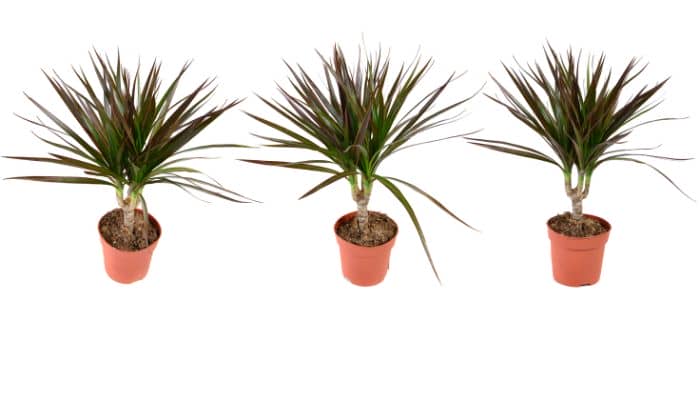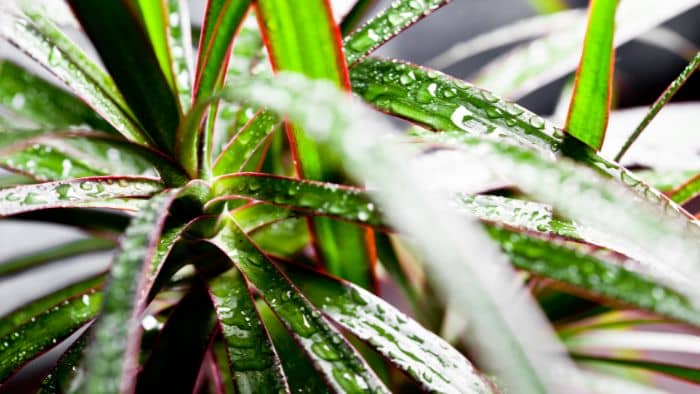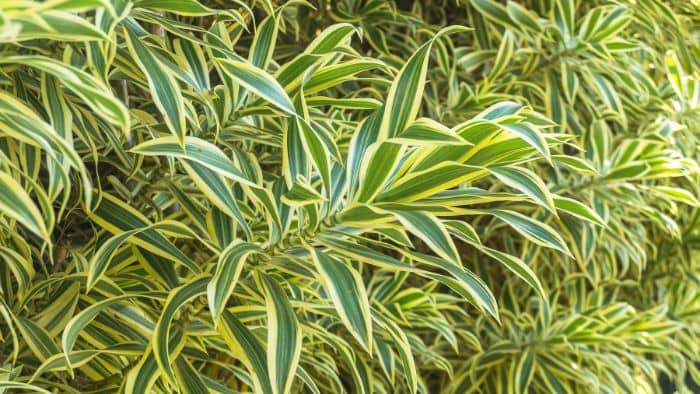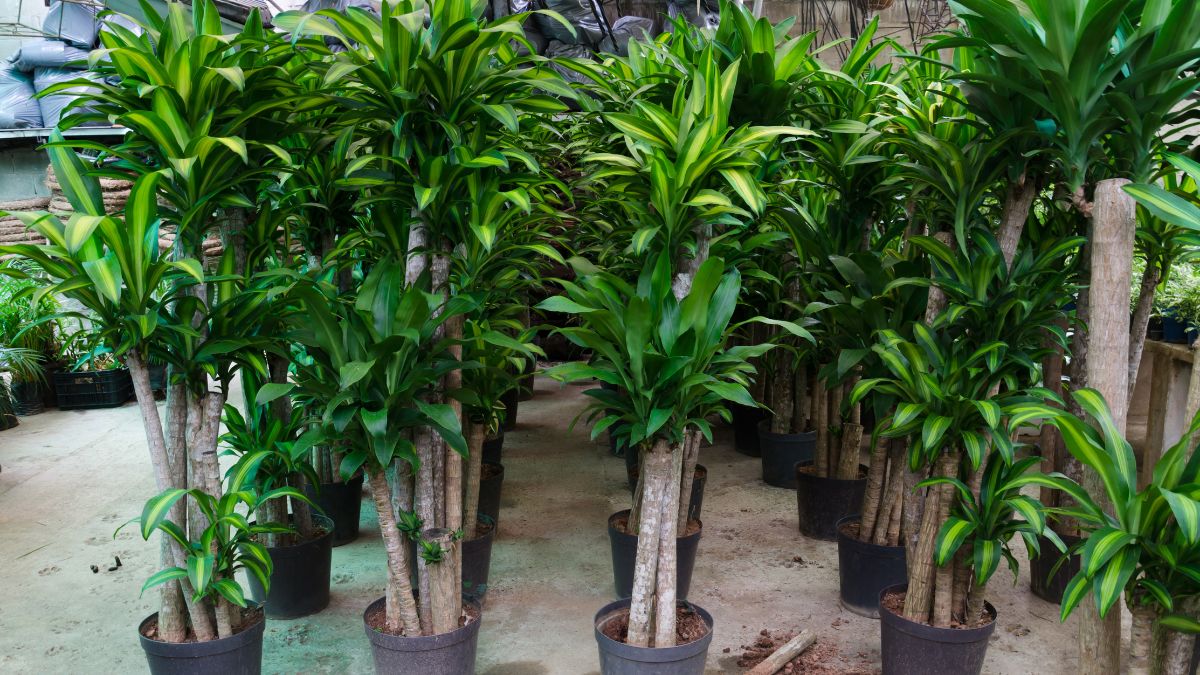This blog post offers great information on the Best Soil for Dracaena Massangeana. One of the most important aspects of starting your green-thumb journey is understanding soil, and knowing what’s best for your chosen plant. Popular as an indoor plant for its air-filtering properties, Dracaena Massangeana is a versatile and forgiving plant.
Commonly known as a corn plant, how can any gardener make sure this member of the asparagus family flourishes in their home? We’ll look at the history of this plant to understand what soil is best for it, the different soil options that it grows well in, and what makes them different. The aim is to ensure that your Dracaena will boast its green and yellow leaves to all your visitors.
Understanding soil is not just knowing how much and when to water your plants. Soil can be acidic, basic, or neutral, and knowing what your plants require will ensure that they are able to grow and bloom to their full potential while in your care. Your soil can range from sandy, clay, silt, or loamy.
Plants like Dracaena need a particular approach for potting to maximize their growth and ensure their health. Knowing how to pot a plant according to its specific needs, and the behavior of the chosen soil is essential to a successful garden. Take a look at the information below to learn more about these fabulous plants.
What Is The History Of Dracaena Massangeana
The Dracaena Massangeana’s historical roots are native to tropical Africa. Considered holy in Tanzania to the WaChaga people where it is known as ‘masale’, the fertile soil of the Kilimanjaro region and moderate climate are best for this plant.
Used as grave markers for generations, when traveling around Tanzania you’ll see places where four plants are in a rectangle, a sure sign that there was a burial in that spot. But there’s more to the cultural significance of this plant as it brings about an important element of the life cycle in the WaChaga culture.
However, the word Dracaena comes from an entirely different part of the world as it is derived from the Ancient Greek word drakaina, meaning dragon. Dracaena lends itself to one of its common names – dragon plant.
This is because of the red sap that is produced by the tree when it grows big enough. The association of dragons with the red sap meant that there were many uses historically of using the plant in rituals and as a medicine.

What is the Best Soil for Dracaena Massangeana
As we have already established, the mountainous region of Tanzania provides the perfect sandy, acidic soil to make the Dracaena Massangeana flourish in nature. But, what if you’re not close to Tanzania and its perfect soil? Following the tips in this guide, you’ll be able to go to your local nursery and make sure that your mix is the best it can be!
Sandy soil or light soil is going to be your Dracaena Massangeana’s best friend, making sure that the drainage is good, as well as keeping the pH level within the plant’s 6.0-6.5 optimal pH range. Luckily for the more scatterbrained gardeners, this plant is forgiving of drought conditions including forgetting to water it occasionally.
Falling on the acidic side of the scale, the best soil for Dracaena Massangeana is organic-rich loam soil with a lesser amount of potassium, magnesium, and calcium compared to other types of soil. Also, to make your soil more acidic, use a nitrogen-rich fertilizer. Watch the next video and learn how to repot a large dracaena plant.
Acid Soil Vs. Alkaline Soil – What are the Pros and Cons?
When you look at acid and alkaline soil, understanding pH levels is important to meet your plant’s needs. This is because some plants thrive on soil with a high pH while others prefer a lower level.
While both acid and alkaline soils have their advantages and disadvantages, the best soil for dracaena massangeana should possess a pH level that falls on the acidic side. Since Dracaena likes acid soils, et’s have a look at the pros and cons below.
Pros of acidic soil:
- Higher pH levels make phosphorus soluble in the soil, an essential nutrient for blooming and producing fruit.
- The soil warms up quickly in the spring season.
- It does not often require added fertilizer.
- There is less clay in acidic soil.
Cons of acidic soil:
- Tends to dry out quicker in the summer so regular water is recommended. Excessive irrigation can wash out too many nutrients from the soil and deprive the plant.
- There is a risk of soil toxicity containing toxic levels of aluminum and manganese. Therefore, soil testing should be done regularly to detect and amend the problem promptly.
- When it comes to Acid soil Vs. Alkaline soil, determining which one is best would depend on the type of plant you’re growing and its need. Both soils are excellent for specific edible plants, grasses, and flowering plants amongst others.

Best Planting Tips for Dracaena Massangeana
So, now that you know what is the best soil for dracaena massangeana, here are some tips to ensure your plant grows to its full potential:
Tips:
- Although we have mentioned what soil type is best for this plant, you should note that you can also make use of brands like Miracle-Gro, where the pH balance is somewhere between 6.3 and 6.8. This is the perfect range for the dracaena plant.
- Keep your plant warm, but avoid giving it too much direct sunlight.
- Do not overwater your plant! Instead, you should keep your soil moist but not too wet.
- Repot your plant every couple of years and use small rocks or pebbles at the bottom of your pot to enhance drainage
- Make sure your pot is big enough to allow for the slow and steady growth of your plant. This is because if the plant pot is too small, it could be detrimental to the plant roots.
- Use soft water to water your plant, avoid water with fluorides.
- Avoid using cactus soil, the best soil for Dracaena Massangeana should include some organic material and be able to retain water.
- Do not let your plant get too cold! Low temperatures can be harmful. Instead, keep it inside in the winter so it stays warm.
Conclusion
There’s a reason the Dracaena Massangeana is such a popular houseplant. Forgiving of a forgetful owner, undemanding, and basking in the warmth, it’s a pleasure to have this plant as a part of your indoor or outdoor scenery.
With a rich history and cheerful appearance, they’re one of the best choices for even a beginner gardener to start their garden. However, their most essential requirement is making sure you’ve got the best soil for Dracaena Massangeana. This will allow them to grow their best and reach their full potential.
Although this plant is pretty low maintenance, ensuring that they get sufficient nutrients in the correct growing medium will afford you the privilege of having an eye-catching leafy green companion for years to come. Click on the link for more information on growing dracaena indoors.

FAQs
[rank_math_rich_snippet id=”s-3fb6ced0-86bd-4c33-a942-45da8a46fed3″]

